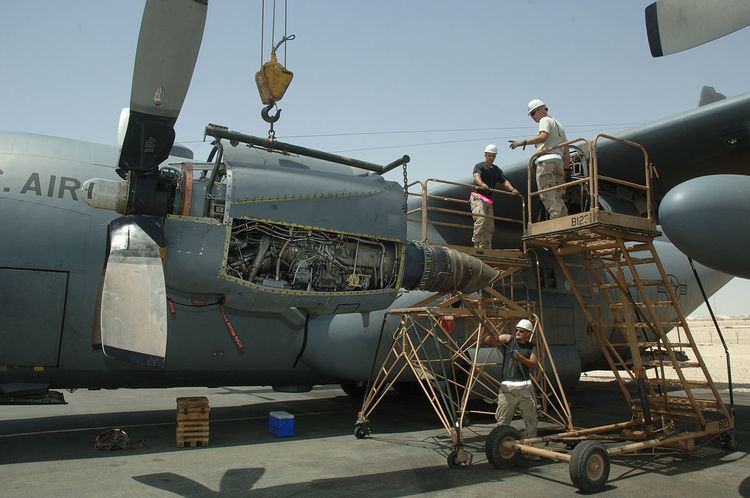 | ||
The Allison T56 is a single-shaft, modular design military turboprop with a 14-stage axial flow compressor driven by a four-stage turbine. It was originally developed by the Allison Engine Company for the Lockheed C-130 Hercules transport entering production in 1954. It is now produced under Rolls-Royce, which acquired Allison in 1995. The commercial version is designated 501-D. With an unusually long production run, over 18,000 engines have been produced since 1954, logging over 200 million flying hours.
Contents
Design and development
The T56 turboshaft evolved from Allison's previous T38 series. It was first flown in the nose of a B-17 testbed aircraft in 1954. Originally fitted to the Lockheed C-130 Hercules, the T56 was also installed on the P-3 and E-2/C-2 aircraft, as well as civilian airliners such as the Lockheed Electra and Convair 580. T56 development almost ended before it began when the T56-A-1 engine Allison delivered to Lockheed in May, 1953 produced only 3,000 hp, not the required 3,750 shp needed for the C-130. Further setbacks occurred in August 1953 when the engine under test only ran for 6 ½ hours before exploding on the test stand. A redesign of the engine ended with the same fate in September of the same year. After a second redesign, success was realized by the Allison team. Evolution of the T56 has been achieved through increase of internal pressure and temperature factors. The T56-A-14 installed on the P-3 Orion has a 4591 shp rating with a compression ratio of 9.25:1 while the T56-A-427 fitted to the E-2 Hawkeye has a 5250 shp rating and a 12:1 compression. In addition, the T56 produces approximately 750 lbs of thrust from its exhaust.
A shipboard version, the 501K engine, is used to generate electrical power for all U.S. Navy cruisers and destroyers currently in commission.
An engine enhancement program saving fuel and providing lower temperatures in the T56 engine was approved in 2013, and the US Air Force expects to save $2 billion and extend the C-130 fleet life.
In the Lockheed Martin C-130J Super Hercules which first flew in 1996, the T56 is replaced by the Rolls-Royce AE 2100, which uses dual FADECs (Full Authority Digital Engine Control) to control the engines and propellers. It drives new six-bladed scimitar propellers from Dowty Rotol.
Variants
Applications
Specifications (T56 Series IV)
Data from Rolls-Royce.
